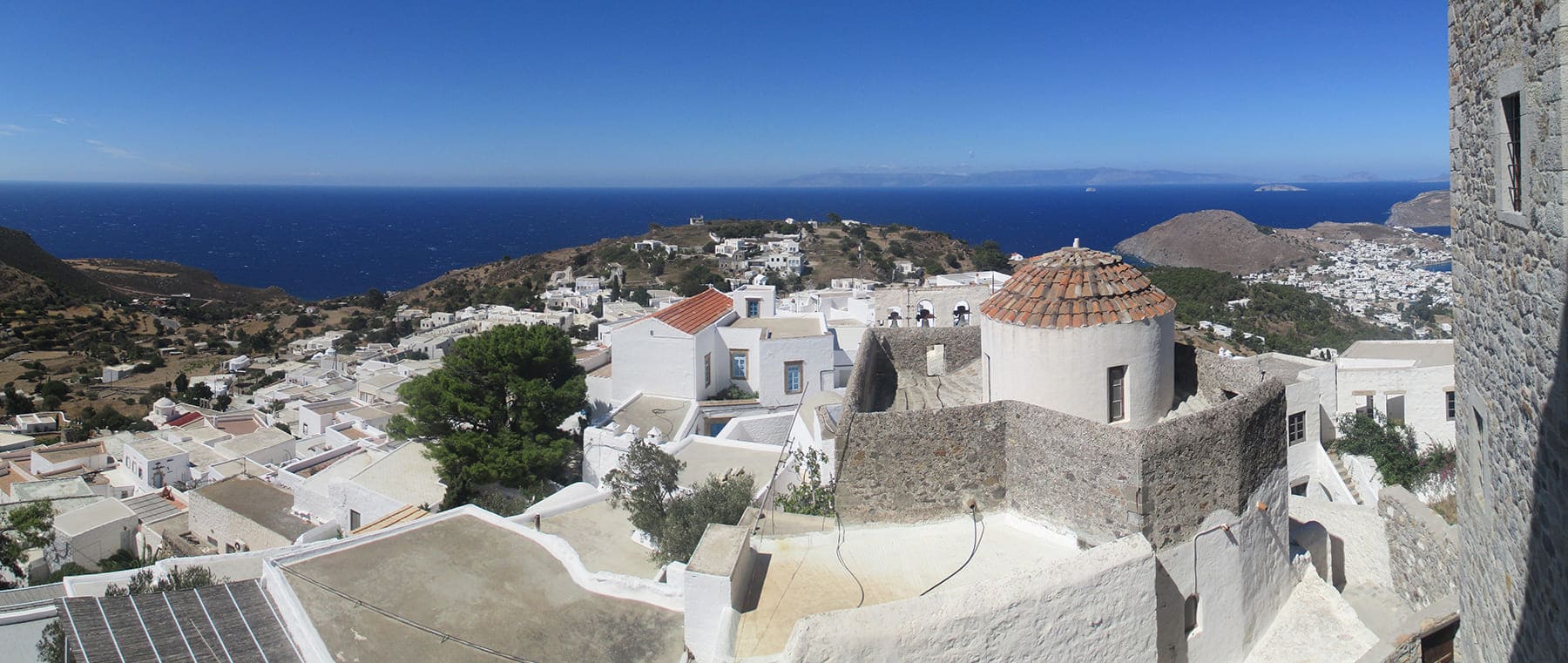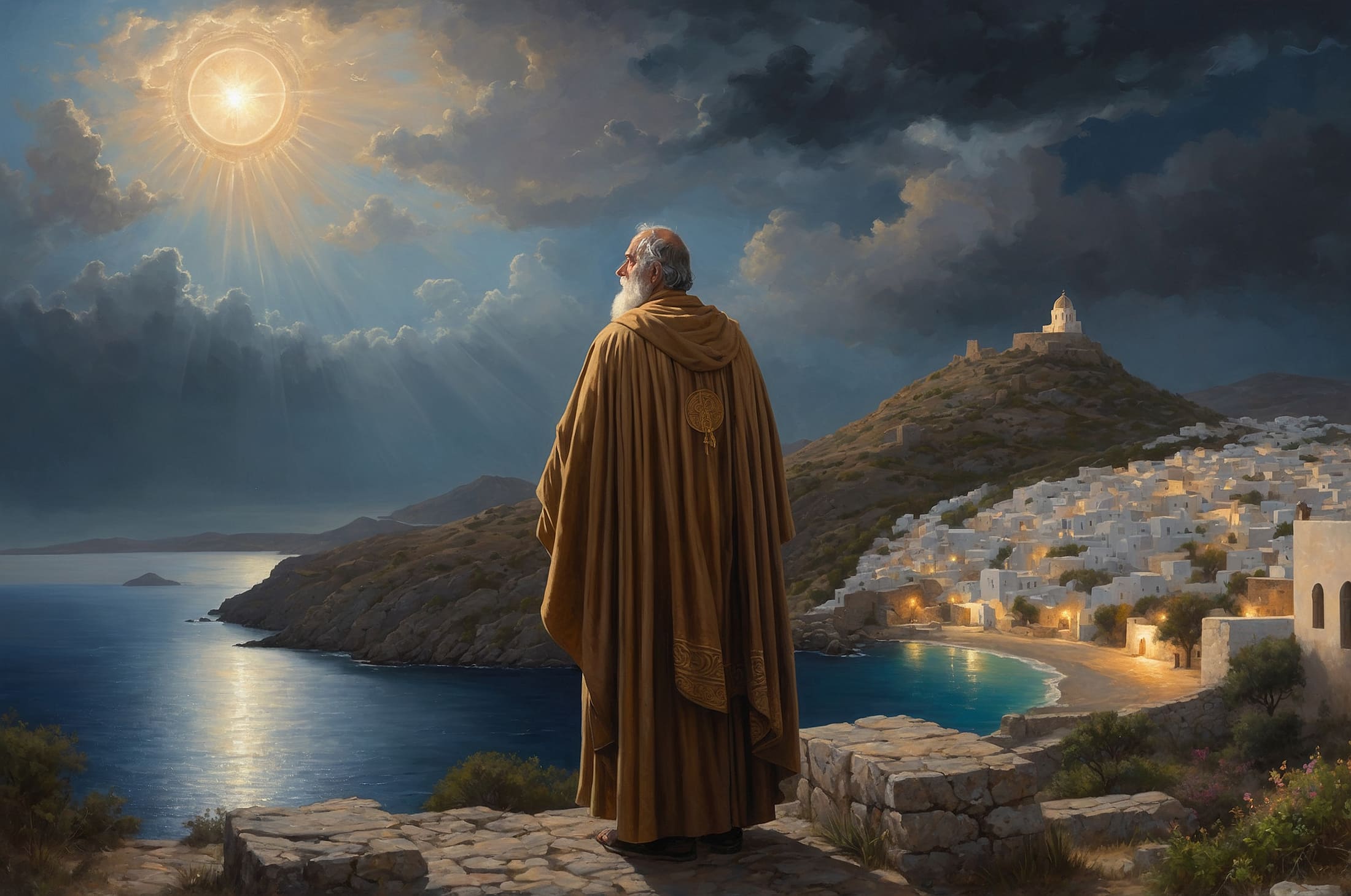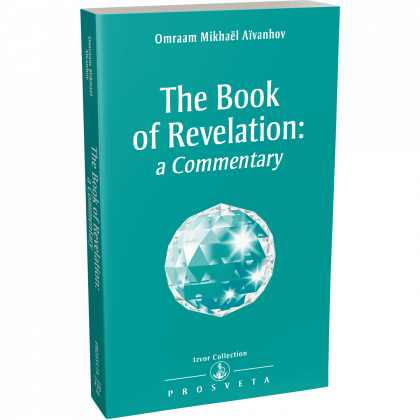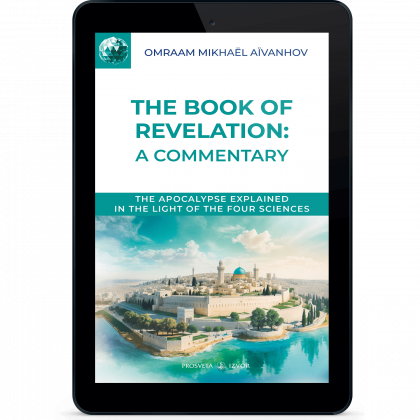Patmos cave
A place of great spiritual importance
'I want to take you with me today as I go back to visit a place that won my heart and the hearts of all those who were with me when we first visited it together. Come with me; let me take you a long way from here, and let us visit this blessed place, the island of Patmos.
Although Patmos is a Greek island, it is much closer to Turkey than to Greece. The only access is by boat. Patmos is a tiny island, a mere dot on the map, but its spiritual importance makes it immense, and it is this immensity that we had set out to explore. Our visit was a pilgrimage, you see, a pilgrimage to the place where St John had lived and wrote his gospel and the book of Revelations. In the first chapter of Revelation, St John himself tells us why he was at Patmos. ‘I, John, your brother who share with you in Jesus the persecution and the kingdom and the patient endurance, was on the island called Patmos because of the word of God and the testimony of Jesus.’
As you approach the island, the first thing that strikes you is the immaculate whiteness of the houses, a whiteness that is all the more dazzling set against the blueness of sky and sea. Some of the island’s little villages are built by the sea. Others, like Khora, are up in the hills, and it is there, in Khora, that we find the monastery of St John the evangelist and the cave of the Apocalypse. The whole complex, which can be seen from every point on the island.
The cave of the Apocalypse itself is neither very big (it can contain only a few people at a time) nor very high (six or seven feet). We were shown a hollow in the rock, which is traditionally believed to have served as a pillow on which St John rested his head, and above this hollow is a cross which the Saint is said to have engraved in the rock. There is also another hollow, on which he is said to have leaned for support when he stood up, for he was already very old. One part of the rock is very straight and smooth with a kind of ledge, and we were told that this was where his disciple Prokhoros wrote the gospel to St John’s dictation. In the arched roof of the cave is a triple opening, which is said to have been made by the thunderbolt that fell when the voice of the Revelation was heard; this triple crack in the rock is considered to be a symbol of the Trinity.
The cave also contains several sacred objects and icons with lamps burning in front of them, and on the walls are various inscriptions in Greek: ‘In the beginning was the Word’; ‘It was here, at Patmos, that these things happened’.
I visited the cave twice to meditate and be in communion with the spirit of St John and was much struck by the quite extraordinary quality of the silence.
After two thousand years and in spite of the countless visitors that have been in and out, nothing has been able to wipe out the fluidic traces left by St John the evangelist on those rocks.
I could sense so many things in this cave, for it is a truly sacred, truly pure, divine place. I hope that you will all have the opportunity to visit it one day.'
'I want to take you with me today as I go back to visit a place that won my heart and the hearts of all those who were with me when we first visited it together. Come with me; let me take you a long way from here, and let us visit this blessed place, the island of Patmos.
Although Patmos is a Greek island, it is much closer to Turkey than to Greece. The only access is by boat. Patmos is a tiny island, a mere dot on the map, but its spiritual importance makes it immense, and it is this immensity that we had set out to explore.
Our visit was a pilgrimage, you see, a pilgrimage to the place where St John had lived and wrote his gospel and the book of Revelations. In the first chapter of Revelation, St John himself tells us why he was at Patmos. ‘I, John, your brother who share with you in Jesus the persecution and the kingdom and the patient endurance, was on the island called Patmos because of the word of God and the testimony of Jesus.’
As you approach the island, the first thing that strikes you is the immaculate whiteness of the houses, a whiteness that is all the more dazzling set against the blueness of sky and sea. Some of the island’s little villages are built by the sea. Others, like Khora, are up in the hills, and it is there, in Khora, that we find the monastery of St John the evangelist and the cave of the Apocalypse. The whole complex, which can be seen from every point on the island.
The cave of the Apocalypse itself is neither very big (it can contain only a few people at a time) nor very high (six or seven feet). We were shown a hollow in the rock, which is traditionally believed to have served as a pillow on which St John rested his head, and above this hollow is a cross which the Saint is said to have engraved in the rock.
There is also another hollow, on which he is said to have leaned for support when he stood up, for he was already very old. One part of the rock is very straight and smooth with a kind of ledge, and we were told that this was where his disciple Prokhoros wrote the gospel to St John’s dictation. In the arched roof of the cave is a triple opening, which is said to have been made by the thunderbolt that fell when the voice of the Revelation was heard; this triple crack in the rock is considered to be a symbol of the Trinity.
The cave also contains several sacred objects and icons with lamps burning in front of them, and on the walls are various inscriptions in Greek: ‘In the beginning was the Word’; ‘It was here, at Patmos, that these things happened’.
I visited the cave twice to meditate and be in communion with the spirit of St John and was much struck by the quite extraordinary quality of the silence.
After two thousand years and in spite of the countless visitors that have been in and out, nothing has been able to wipe out the fluidic traces left by St John the evangelist on those rocks.
I could sense so many things in this cave, for it is a truly sacred, truly pure, divine place. I hope that you will all have the opportunity to visit it one day.'
Text taken from the book "The Book of Revelations: a Commentary", chap. 1 "The Island of Patmos".





